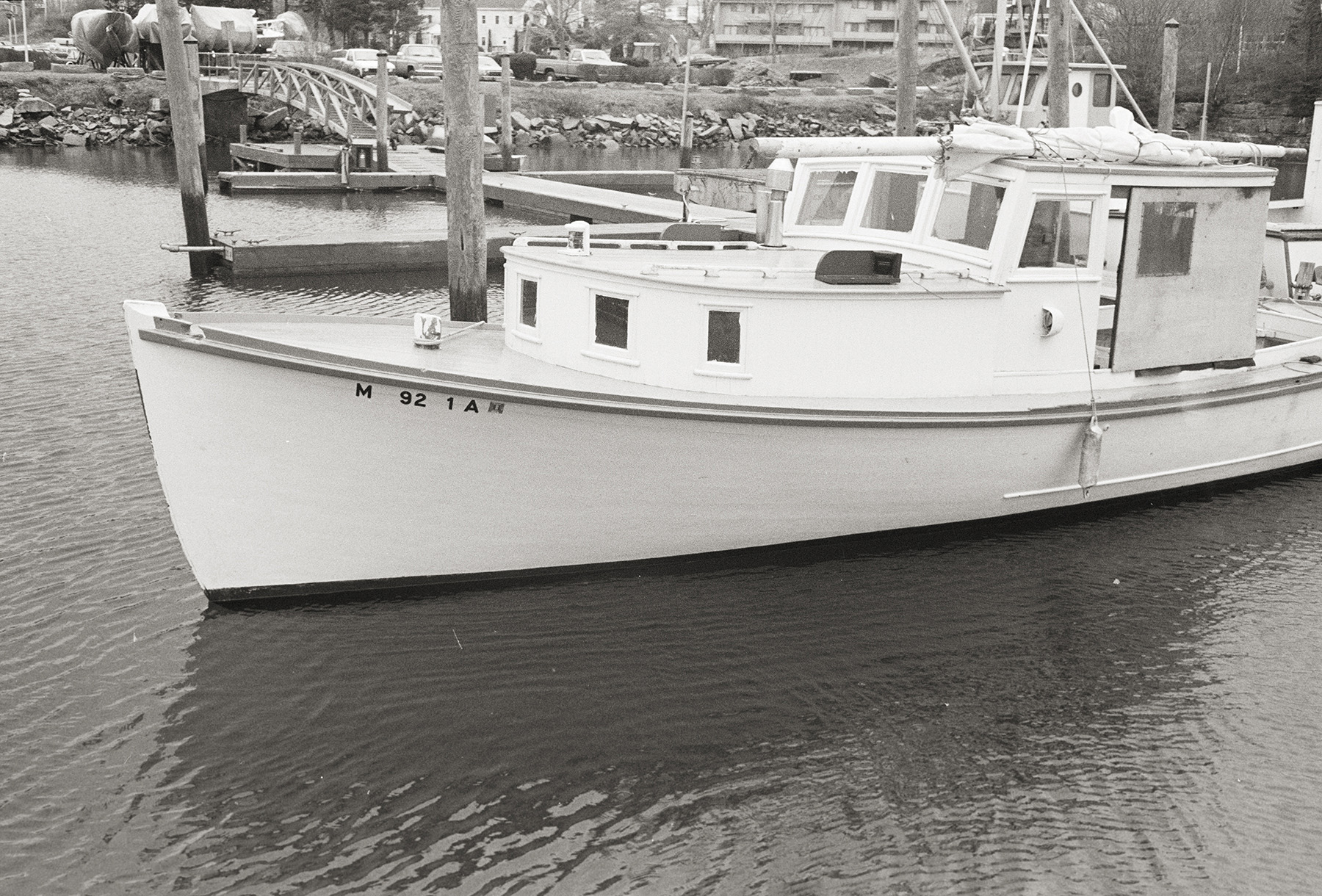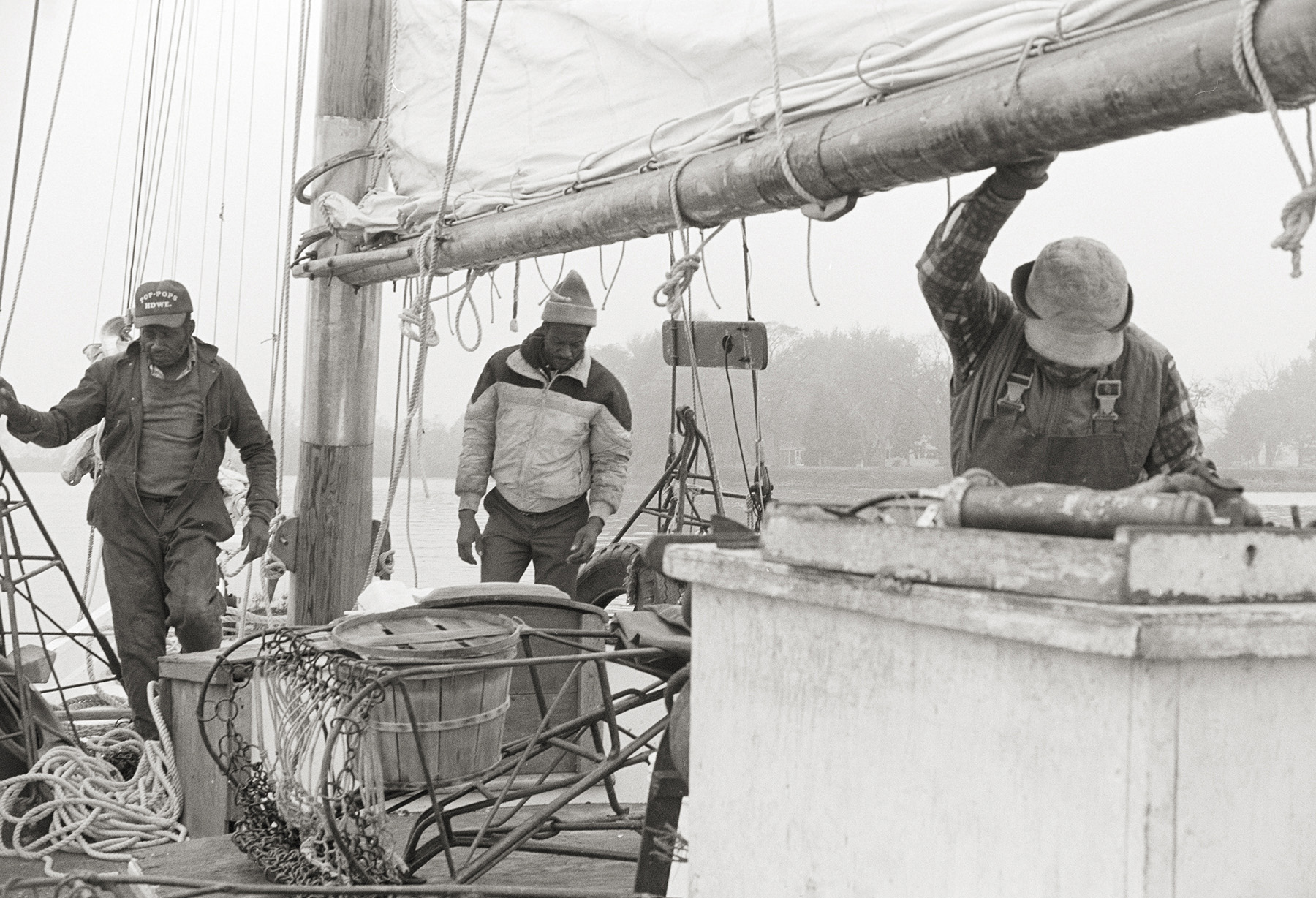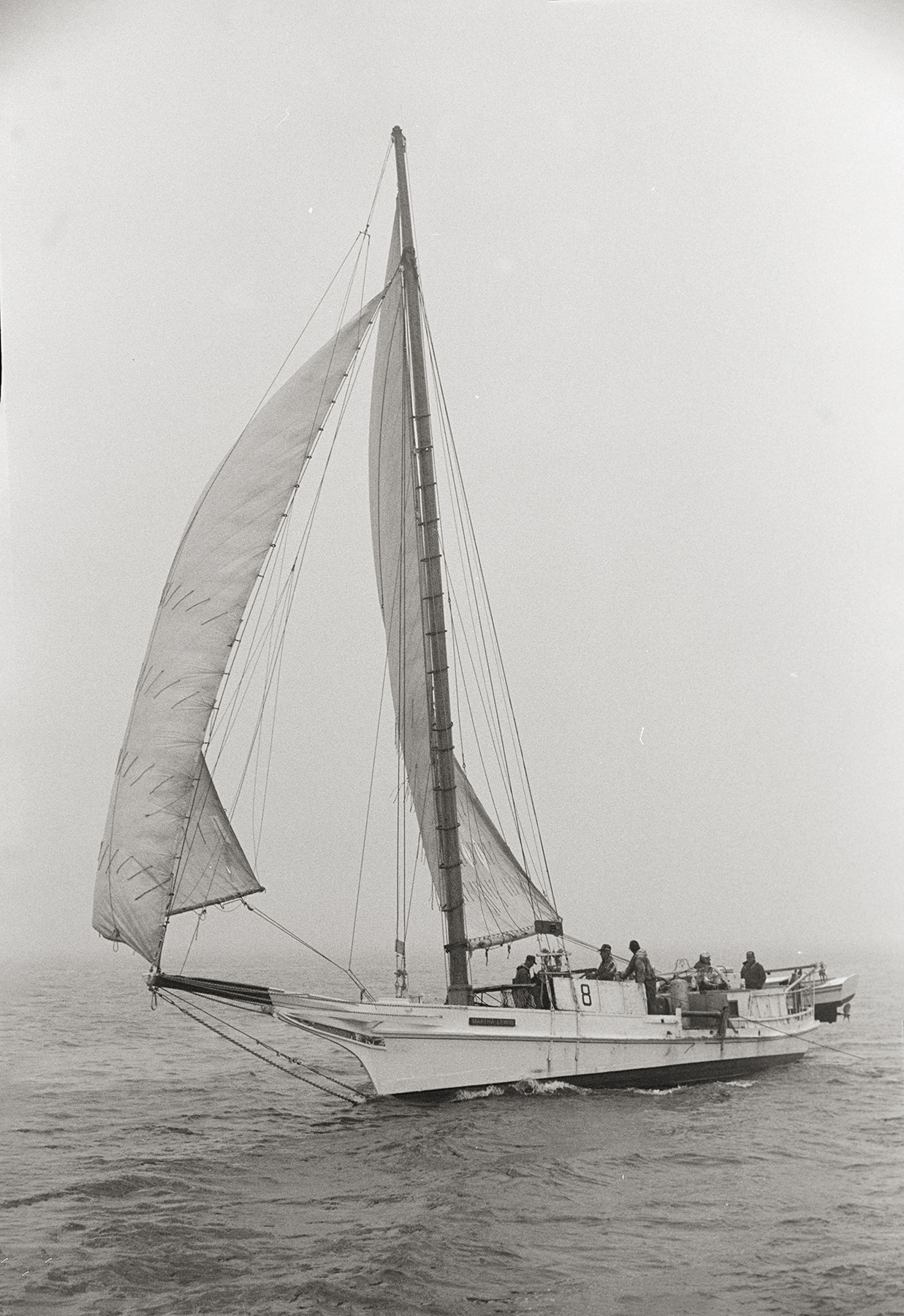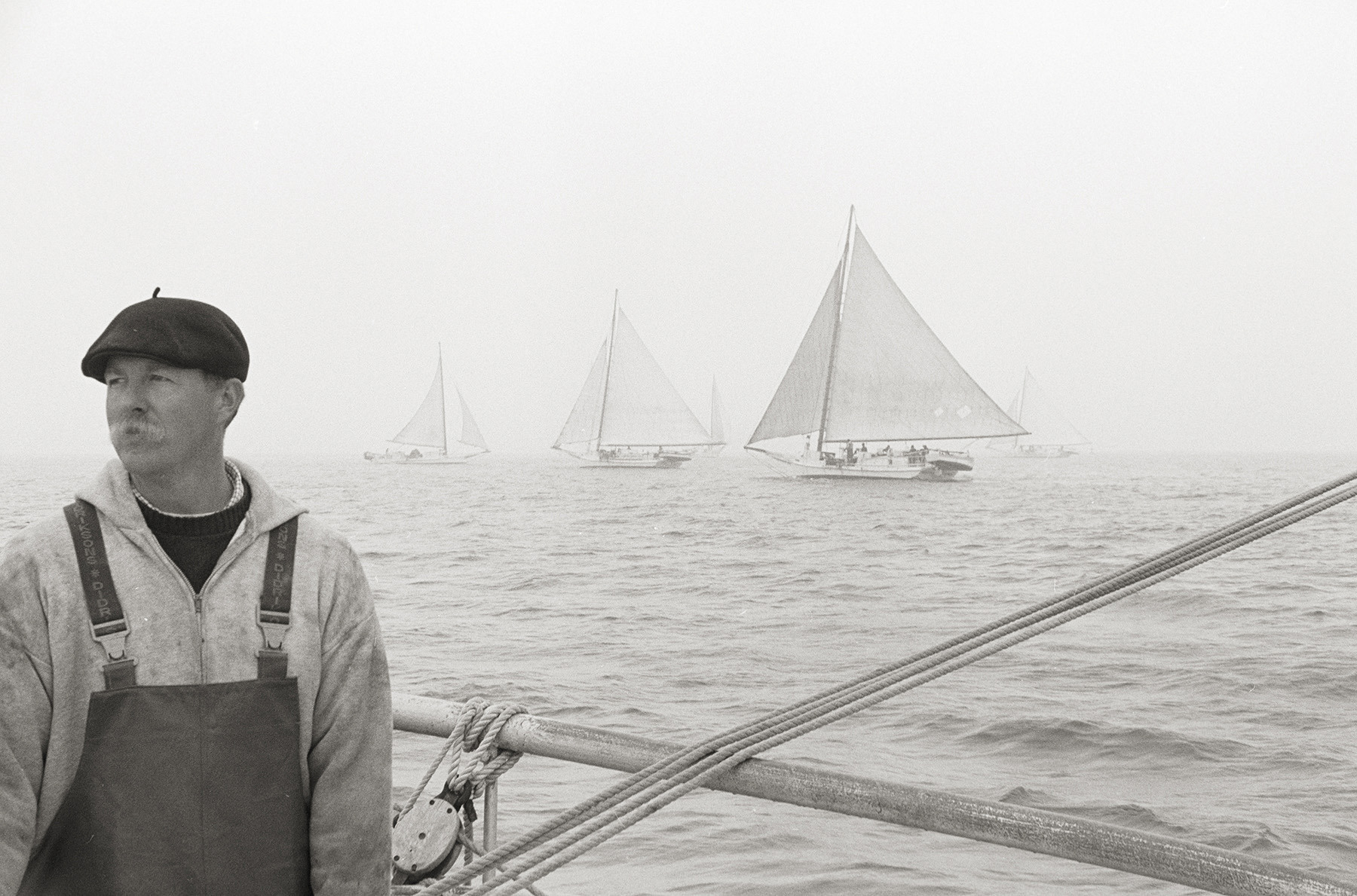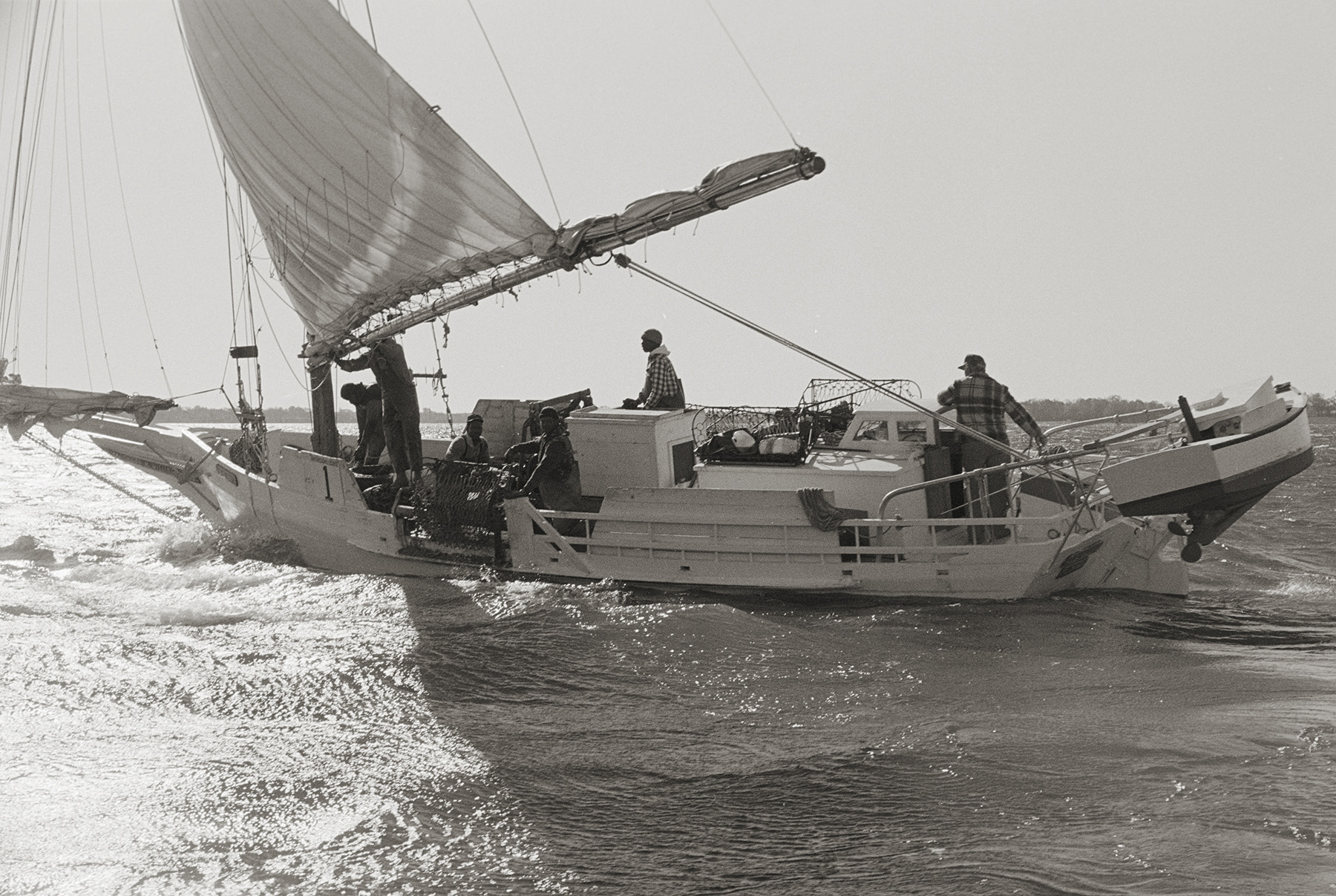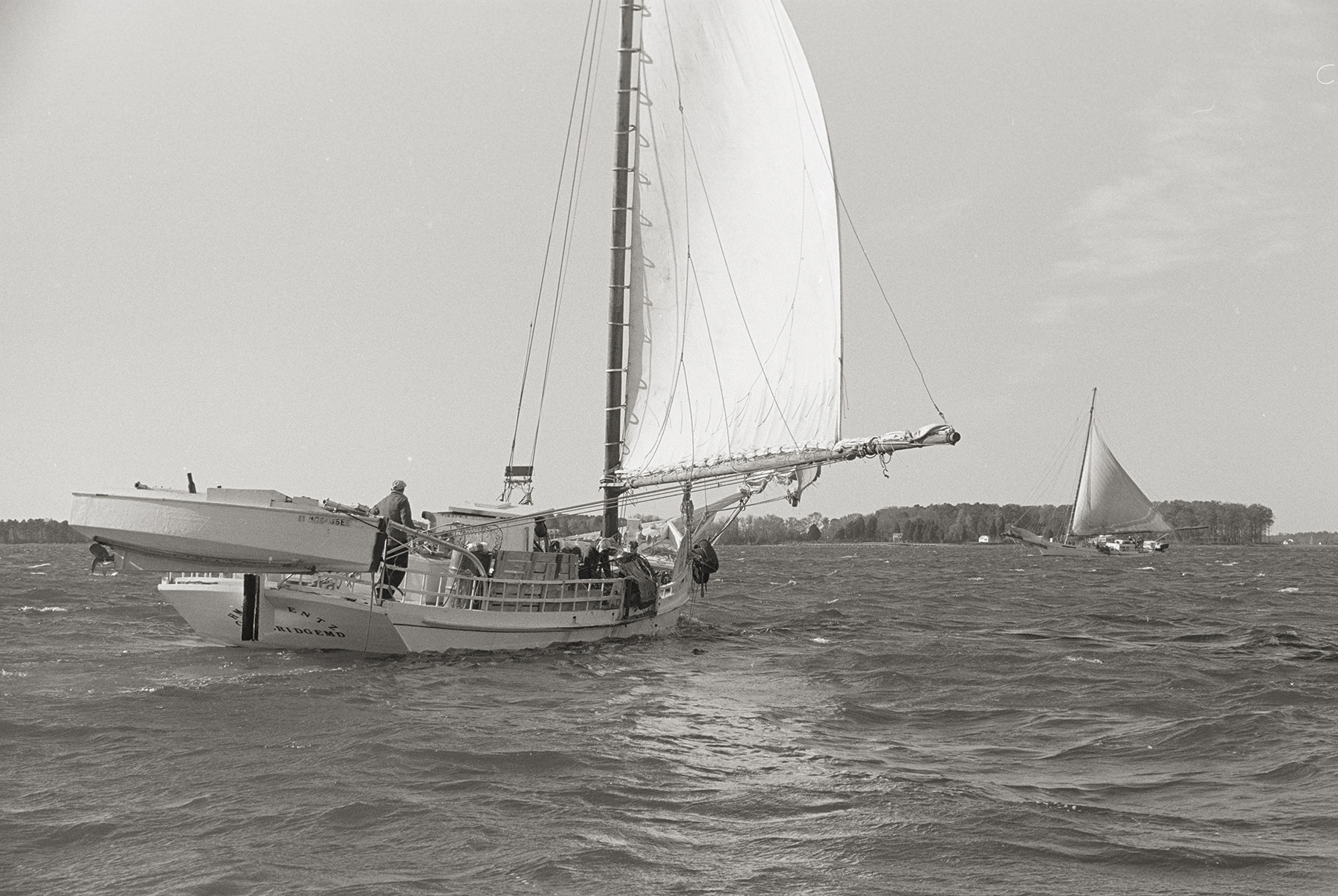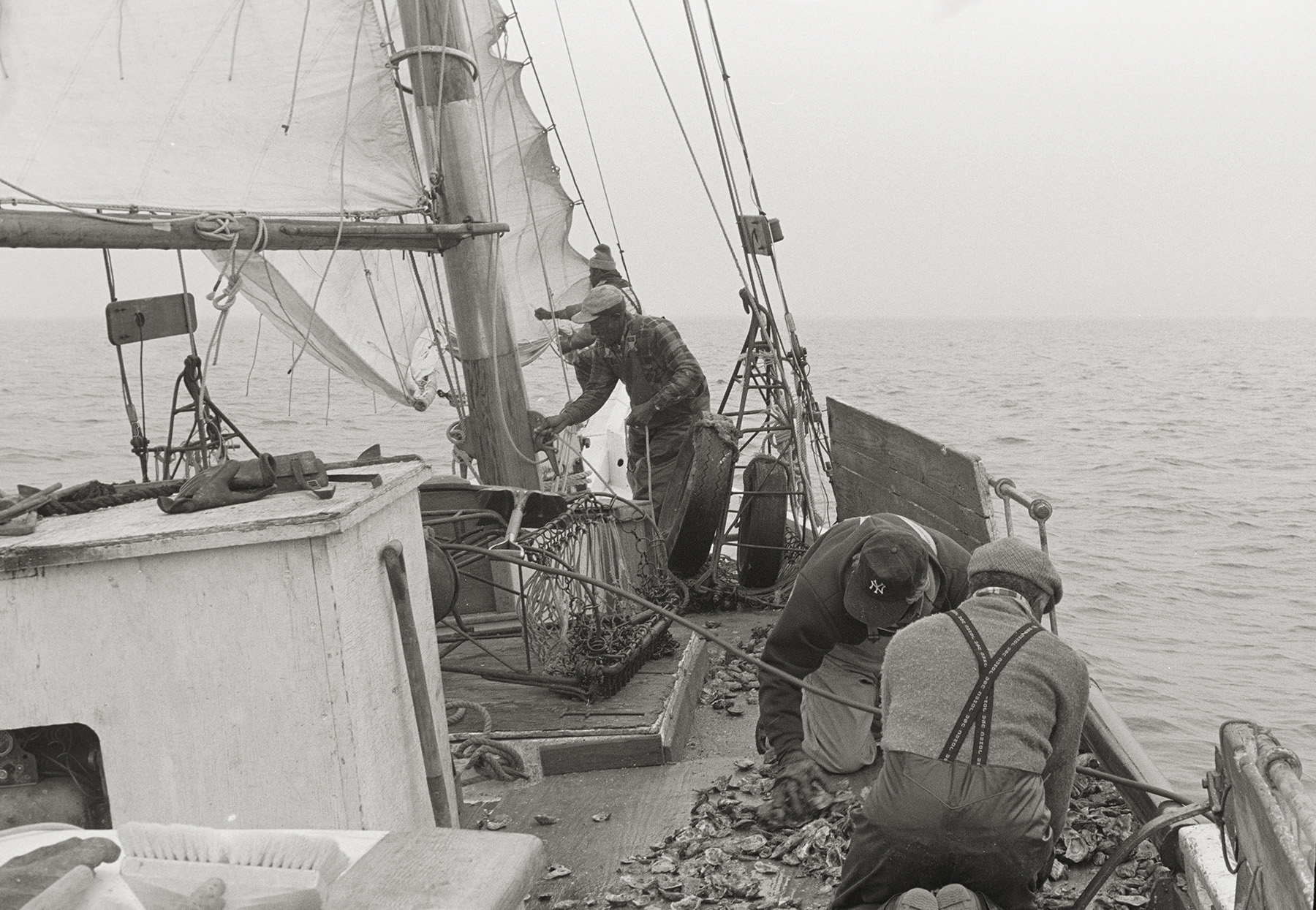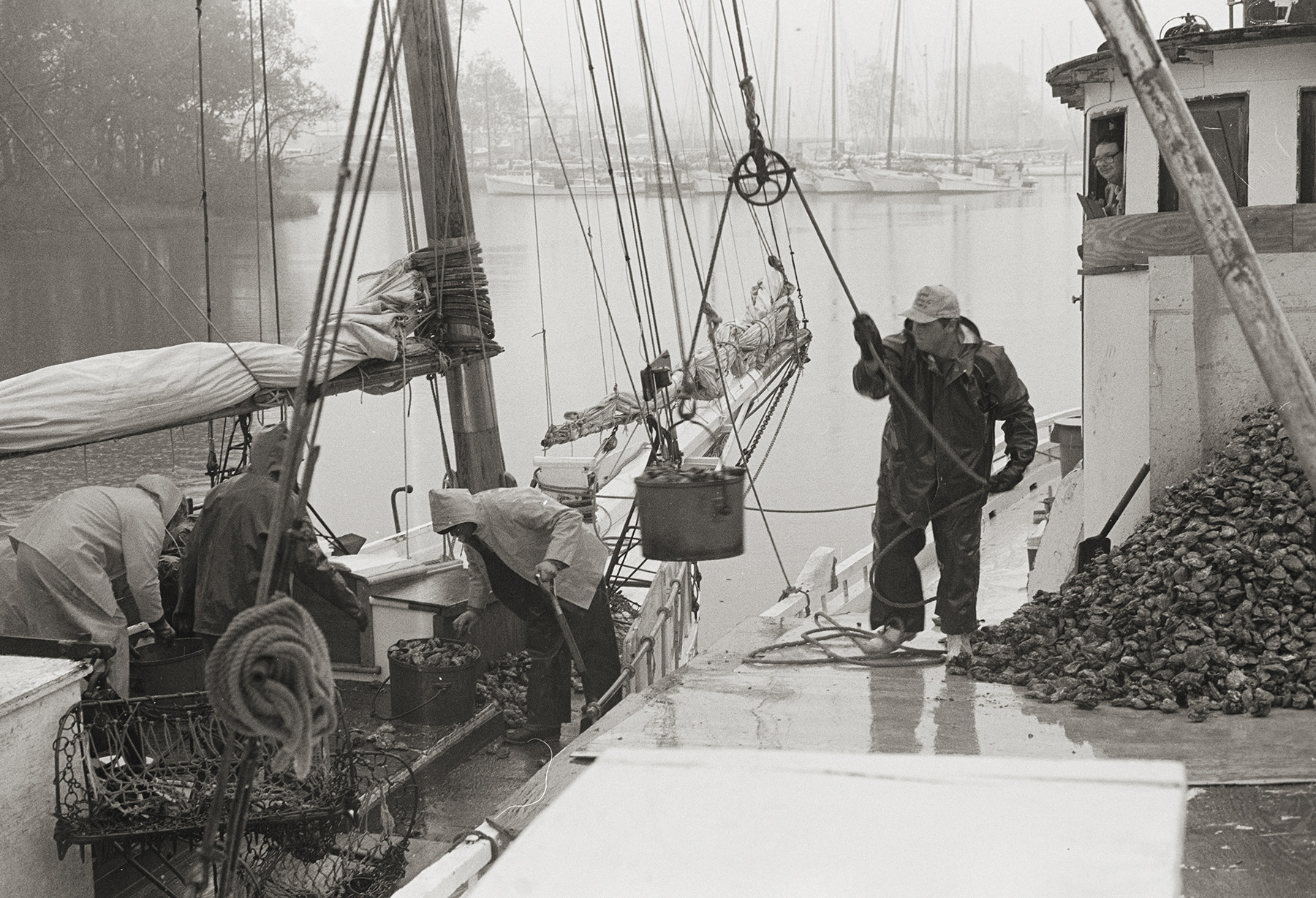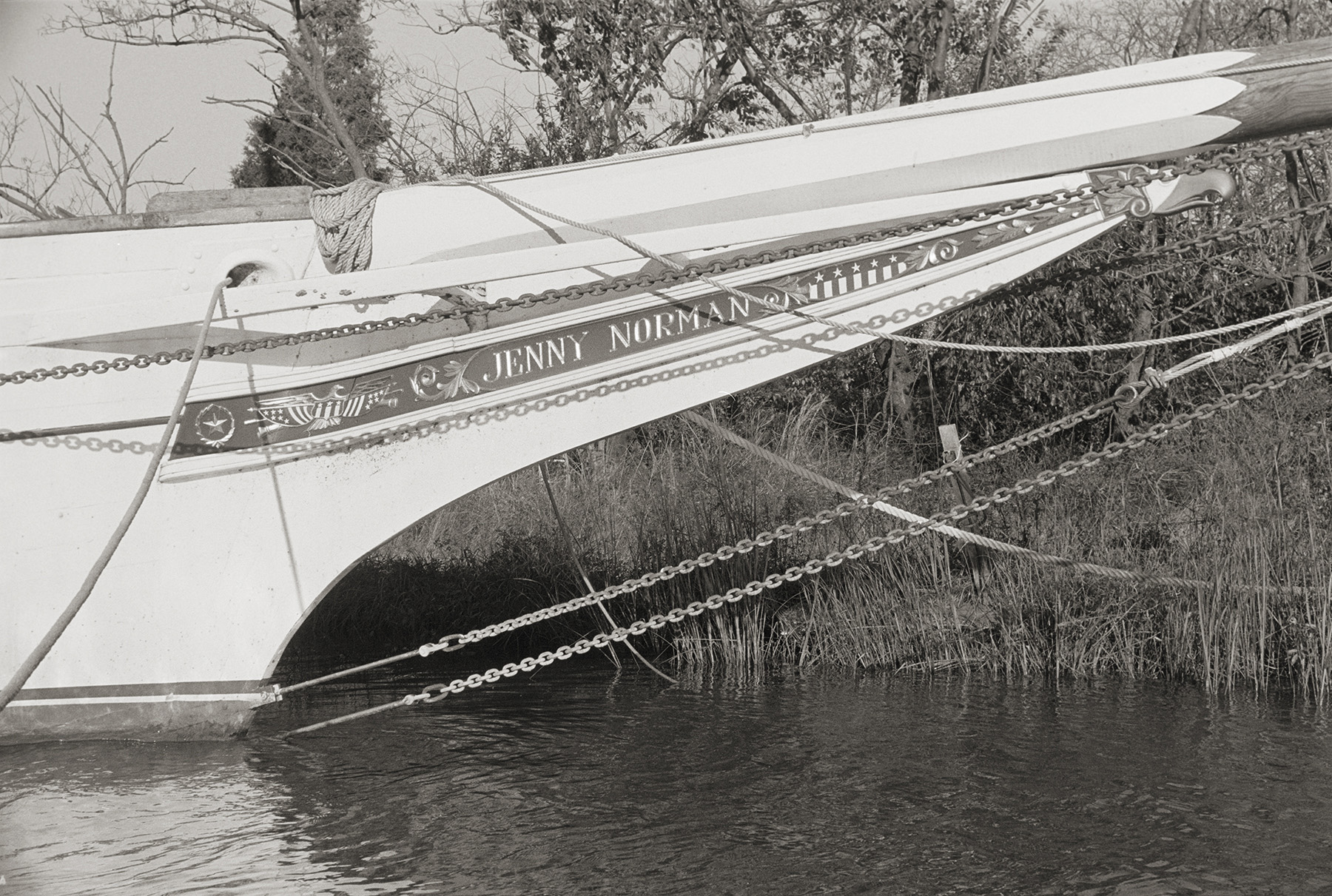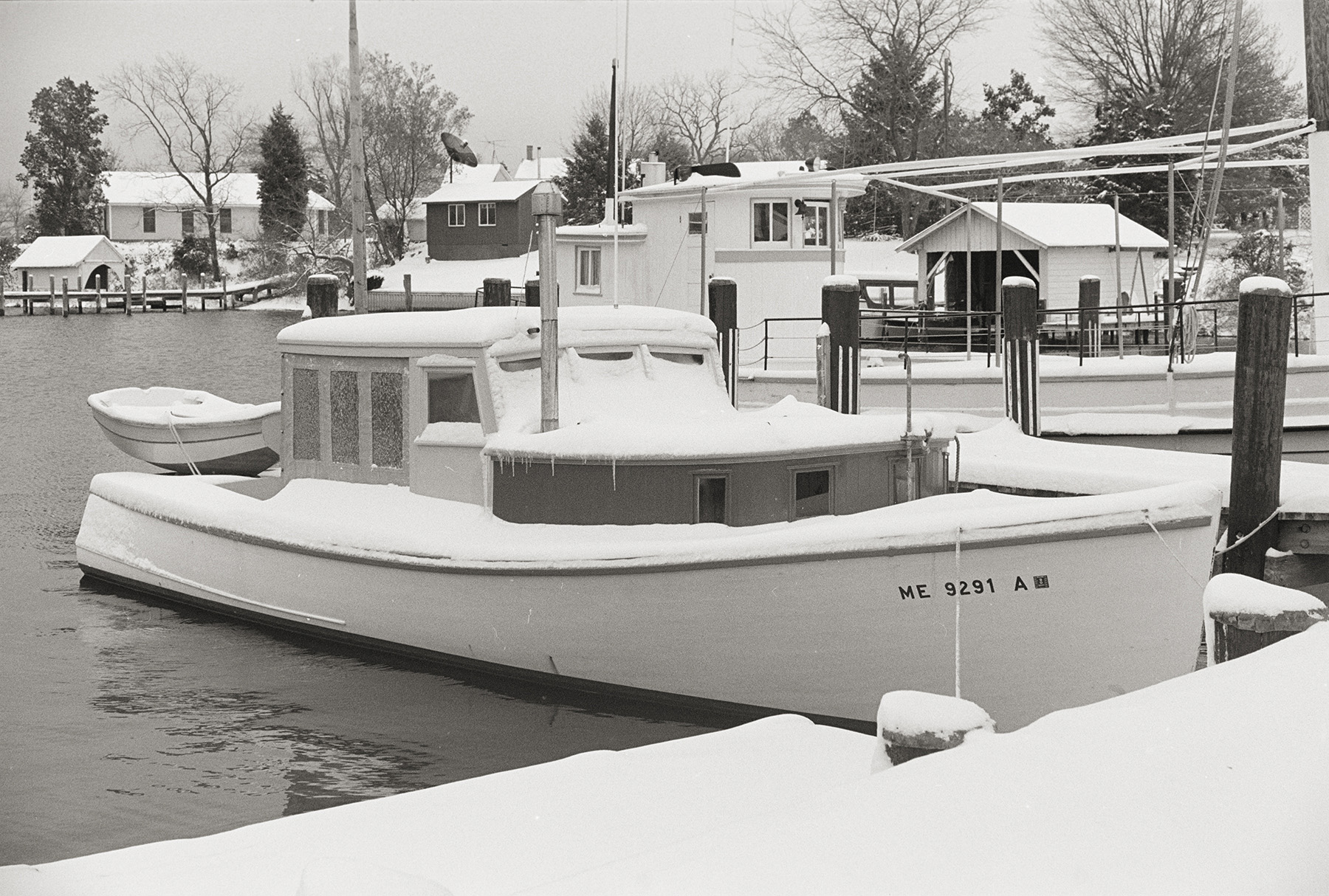Oysters and Chance Encounters
A little before the end of Daylight Savings in 1989, Maynard and Anne Bray struck out on an autumn cruise aboard Charlena, the 31’ converted lobster boat they’d recently bought from a friend in Northeast Harbor. Doug Hylan and Maynard had replaced some frames and installed a new platform, but otherwise, she was much like the handsome craft that Newell McLain had built for himself in Thomaston, Maine, in 1943.
After Maynard and Doug had steamed Charlena to Mystic Seaport in September, the Brays started south via the back side of Long Island and the ICW to Chesapeake Bay and the Eastern Shore of Maryland, and there explored the harbors and inlets. True to their inclinations, they kept their eyes open for classic wooden boats, and knew from experience they wouldn’t be disappointed. By chance, a focus of their casual research came to be the skipjack, a type of shallow sailing craft used for oystering that evolved from the log canoe.
The skipjack emerged in response to Maryland’s historic ban on dredging oysters under power. At the time of the Bray’s visit, there was still a sizeable fleet of skipjacks dredging under sail. These were a striking sight, with their long booms, raking masts, decorated bows, and indispensable bowsprits that helped carry a large jib. The trick in designing these boats was to create lots of options for sail area—full sail for light air, and reefed in various ways for windy days. This allowed the captain to maintain the right speed for slowly dragging a dredge over the muddy bottom of the bay.
By luck, the duo ran across Ed Farley, an old friend from the Apprenticeshop, a traditional boatbuilding school then headquartered at Maine Maritime Museum in Bath. Ed had sailed with his family to the Chesapeake from Maine in the early 1970s and never went back. He had taken up oyster dredging with his 48’ skipjack Stanley Norman and invited the Brays to join him and his crew onboard during a workday.
Later, to diversify his livelihood in the face of parasite increases and oyster die-off, he started taking kids and teachers up into the Choptank estuary to teach them about its ecology and history. As of 2018, Farley was still dredging, though had sold the Norman and acquired another skipjack, the H.M. Krentz. In the off season, he continues his living history lessons with tourists who come aboard for sailing tours of the Choptank.
Anne and Maynard finished their cruise on the other side of the Bay in Solomons, Maryland. Charlena spent the winter there, hauled out in a nearby boatyard, but not before the Brays had Thanksgiving aboard under an early blanket of snow. Their boat was trailered home in the spring.
